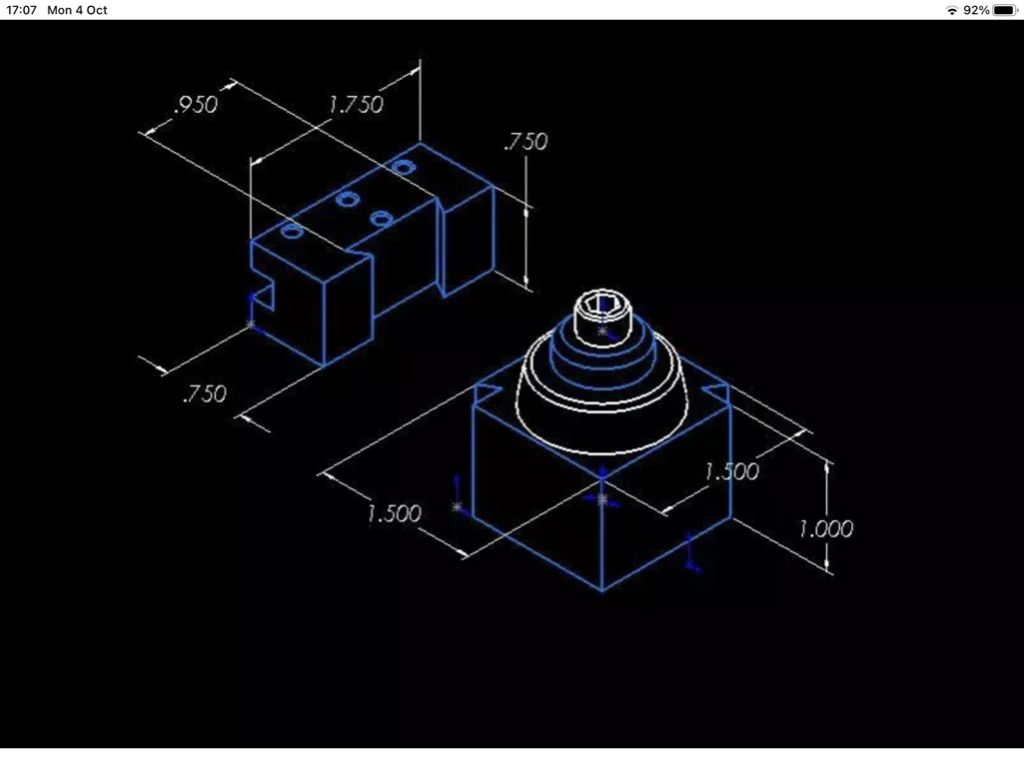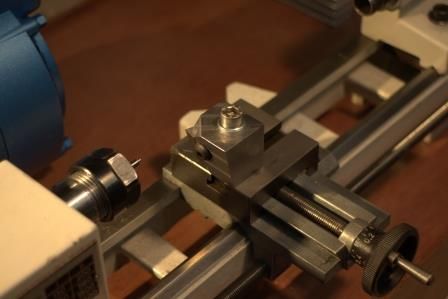Hi David, an interesting post!
I do like your stiffening plates for the Unimat, as described, but where do I find your album with pictures? (I could hunt for ages in the "album" file and not find it!). I fancy having a go at stiffening my lathe, at some point.
I am concerned that you are trying to get a "Quart from a pint pot" – but seem happy with your solution anyway.
The SL was intended for SMALL WATCH PARTS, not big clock parts, as far as I understand. So with the small original motor, and available torque, it was quite sufficiently accurate for the small cuts and speeds involved. I have never had a problem using it where my "regular" 8"-swing lathe is too big.
But I did exceed the 8 minute limit on the motor and it stopped, like "grand-father's clock, never to go again". So I replaced that with a lawn mower 180W brush motor (brush wiring, direction-reversed). However, that is EXCEEDINGLY NOISY! I use a speed controller (cheap £3-worth) to tame the speed of the motor, and also the torque, so still have no problems making little parts (anything under 1/2" diam.). I just have not found a different suitable small motor, yet. Has anyone found a QUIET induction motor (Brushless) that is suitable?
Can anyone advise the speed of the original motor?
On tool posts, I simply set my tools, with appropriate packing for height, stuck-on with loctite, so I can simply extract them from the tool post and put the next one in without any fiddly adjustment… still only a single spanner, so I wonder why I have never looked for a quick-change tool -post? Many years ago I made a 3-way tool-post for a Myford ML3 that I previously owned. Bought the casting from a UK model supplier. Brilliant! Except I still use the pre-set tools in my current 4-way tool-post as I am always changing from the tools in that one!
On belts, I have never had a slippage problem, using replacement belts made from spliced and super-glued viton O-rings, but they didn't last as long as I wanted so I bought some polyurethane belts from 3&@y… which work fine (for me). Maybe I am not over-working my lathe? I have an 8"-swing, 750W. lathe so can rough parts to near size for finishing if necessary, but the Unimat is generally used on brass parts below 1/4", with fine cuts, so as to retain the accuracy of the capability of the machine. (e.g. gas jets with 0.010" drilled holes).
I like the idea of your "buddy-bar", but I can only guess what it is as I don't know what you really mean by that terminology? I use a simply piece of 5/16" silver steel – held in the tailstock chuck, which is then locked, headstock not clamped, tighten the chuck onto the bar, then tighten the headstock (ignoring the alignment pin). Then the bar can be removed and the alignment is true (well enough for me!). So is that what you do with the "buddy-bar"?
Thanks all,
Ken
Ken Chicken 1.






